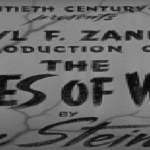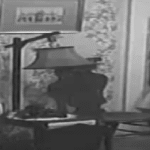The 1941 television serial The Adventures of Captain Marvel stands as a landmark in the history of superhero cinema. Produced by Republic Pictures and comprising twelve chapters, it was among the earliest live-action adaptations of a comic book superhero, setting a precedent for the genre. Based on the Fawcett Comics character, the serial follows the story of young radio reporter Billy Batson, who transforms into the mighty Captain Marvel to combat a sinister threat involving ancient relics, science fiction gadgetry, and a mysterious villain known only as the Scorpion.
The story begins in Siam, where an archaeological expedition led by a group of American scientists uncovers an ancient tomb. There, they discover the powerful golden Scorpion idol, a relic containing lenses capable of harnessing the sun’s energy into a destructive beam. In a bid to prevent the idol from falling into the wrong hands, the scientists agree to separate the lenses and take one each back to America. However, it is too late. An evil figure, concealed behind a hood and mask, is already intent on collecting all the lenses to assemble the Scorpion and wield its power for domination.
During the expedition, Billy Batson strays into a sacred chamber and is chosen by the ancient wizard Shazam, who bestows upon him the ability to transform into Captain Marvel by uttering the wizard’s name. With this power, Billy gains superhuman strength, flight, and invulnerability, as well as a moral imperative to protect the world from evil. This transformation is depicted with notable technical achievement for the time, using clever editing and special effects to portray the dynamic changes between the young reporter and his heroic alter ego.
Back in the United States, the Scorpion begins a campaign of terror, systematically targeting the scientists in possession of the lenses. Each episode typically features a cliffhanger ending, a hallmark of serial storytelling, where Captain Marvel must intervene to save lives and thwart the villain’s plans. The identity of the Scorpion remains unknown throughout the majority of the serial, which adds an element of mystery. He communicates through radio and written messages, often cloaked in shadow, with his identity concealed behind a mask and a distorted voice.
As Captain Marvel, Billy faces a variety of threats including death rays, collapsing buildings, car chases, and traps set by the Scorpion’s henchmen. The serial blends the ancient mysticism surrounding the idol with more modern threats, incorporating the pulp science fiction themes popular at the time. Despite being an early production, the serial is praised for its action sequences and its surprisingly convincing flight effects, which were achieved using a combination of stunt doubles and clever wirework with dummies.
Frank Coghlan Jr. plays Billy Batson with earnestness, capturing the courage and youthful innocence of the character, while Tom Tyler portrays Captain Marvel with a stern, physically imposing presence that contrasts effectively with Billy’s more grounded nature. The transformation between the two adds a dual-identity element that enhances the narrative tension. The supporting cast, including Louise Currie as Betty Wallace and Robert Strange as Bentley, bolster the serial with a mix of dramatic and light-hearted moments, though their characters often serve as foils or targets for rescue.
As the episodes progress, Captain Marvel is repeatedly drawn into confrontations with the Scorpion’s gang, racing against time to prevent the assembly of the complete idol. Each of the scientists who possess the lenses becomes a potential victim, and Captain Marvel must deduce the villain’s next move while also protecting his own identity. Suspicion eventually falls on the group of scientists themselves, suggesting that the Scorpion might be one of their own, which introduces a whodunnit element to the storyline. This twist enriches the serial, moving it beyond mere action to include intrigue and character dynamics.
Despite being created in an era of limited resources and wartime constraints, the production quality is notable. Directors William Witney and John English employed a fast-paced, efficient storytelling style, using practical effects, real locations, and meticulous stunt coordination. The tone of the serial strikes a balance between serious threat and youthful adventure, making it accessible to audiences of all ages. The musical score is dramatic and used effectively to build tension during action scenes and cliffhanger moments.
Eventually, Captain Marvel narrows down the suspects and unravels the identity of the Scorpion. The climactic confrontation is suitably dramatic, involving the complete reassembly of the idol and the use of its deadly beam. Captain Marvel must confront not only the physical dangers posed by the idol but also the moral choices involved in using such power. The resolution is satisfying, with justice served and the lenses once again separated and hidden from potential misuse. The serial ends with a sense of closure, though it leaves room for further adventures.
The Adventures of Captain Marvel stands out for more than just being the first superhero serial. It established tropes that would become standard in superhero storytelling: the secret identity, the recurring villain, the moral responsibility of power, and the use of technology and mysticism. It also offered one of the first on-screen portrayals of a flying superhero, a technical achievement that would influence future productions.
Though limited by the sensibilities and technologies of its time, the serial remains a compelling piece of early comic book cinema. It captures the sense of wonder and adventure that defines the superhero genre, with earnest performances, imaginative set pieces, and a commitment to storytelling that transcends its low-budget origins. For modern viewers, it serves as a window into the early days of screen-based superheroism, long before the glossy blockbusters of today. It is not merely a historical curiosity but a foundational text, one that paved the way for the vast cinematic universes that followed.
In sum, The Adventures of Captain Marvel is a spirited, inventive serial that delivers excitement, suspense, and a timeless battle between good and evil. It may appear quaint by modern standards, but its influence is profound, and its heart is firmly in the right place. It endures not just as entertainment but as a piece of film history that helped shape the superhero genre as we know it today.







